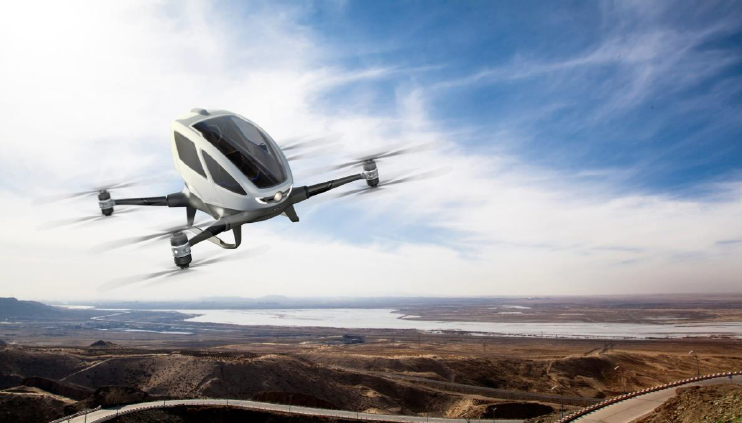
Quin Slifer
Quin is a senior at Lafayette College studying Mechanical Engineering.
Inside a laboratory of Boston University a robot designs, 3D prints, and then hydraulically crushes a 1 inch tall object before throwing it away and repeating the process. Since May of 2021, this process has been repeated over 25,000 times. First conceptualized by mechanical engineering professor Keith Brown in 2018, the Mechanics of Additively Manufactured Architectures Bayesian Experimental Autonomous Researcher or MAMA BEAR, for short, is an autonomous and self learning robot. She has worked around the clock with minimal breaks or maintenance for over 3 years now with one simple goal: to create the most efficient shape for energy absorption. You see, BU’s new toy is much more complicated than build, destroy, repeat. With each unique design, MAMA BEAR stores the exact geometry of the solid before printing it in a color of her choice, usually the one a technician has reloaded for her that day. The golf ball sized structure is then removed from the printing bay and weighed to the nearest ten thousandth of an ounce. Naturally, the final step is to crush it with a hydraulic press capable of a 100,000 Newton maximum load, or about the weight of a semi truck without a trailer. Key information on the energy put into and absorbed by the solid are also logged into a database. Aside from the time it takes to 3D print, the university’s robot is hasty in her actions. Within seconds, MAMA BEAR knows exactly what she will print next based entirely on the information of previous designs stored in her database. She is clever and careful in her design approach, sometimes even creating a purposefully weaker shape in order to gain more information on what to avoid in the future. Each iteration builds off of the last, aiming to replicate what went right and minimize what went wrong.
Now, one might be asking: how does MAMA BEAR do this and is it even useful?
Both are valid questions. Before we tackle them, however, I want to address the name of the robot in its entirety, as it will provide us with some hints. MAMA again stands for Mechanics of Additively Manufactured Architectures. Those last three words are a fancy way of saying “3D printed pieces”, therefore her first name lets us know that one of her extremities is a PLA plastic 3D printer. That second part, Bayesian Experimental Autonomous Researcher, is a little more complicated. As mentioned previously, MAMA BEAR is entirely autonomous and self-sufficient, with very brief breaks to refill printing material and to empty bins full of previously crushed iterations. Furthermore, she utilizes artificial intelligence and machine learning to research new designs and experiment with how they will perform. She does this by utilizing a technique known as Bayesian Optimization.
Bayesian Optimization is a statistical method used to find the optimal solution to a problem that would otherwise take lots of time and money to do. This is done by trying to most efficiently understand each aspect of the problem and how they contribute to the optimal solution, known as hyperparameters. For example, suppose you are trying to find the best restaurant in your town, but you cannot afford to try all of them, nor do you have the time. It is important to note that Bayesian optimization does require some prior knowledge, simply picking a restaurant at random would create inefficiencies, which is what we are trying to avoid. Let’s say you already know you like to eat Italian food, enjoy cocktails with dinner, and do not mind eating outside. Therefore, you read some online reviews on restaurants in order to find a place that most aligns with your initial parameters. After eating at your first choice, you gather results on what you enjoyed, did not enjoy, and what you think you would like to try next. This gathered information will update your preferences for the future. You have to choose your next spot smartly, balancing between trying restaurants that you think will be good and exploring new possibilities that you’re unsure about. It’s like sometimes sticking to highly-rated Italian places, but occasionally trying out a well-reviewed sushi spot. As you try more and more venues, your idea of the “best” becomes more and more defined, and your next options become more and more narrow. Bayesian Optimization uses math to do all of this systematically, aiming to find the best solution with the least amount of testing. It is very useful in situations where testing all possibilities is too expensive or time consuming.
To analogize the previous scenario to MAMA BEAR, there are many hyperparameters considered in the optimizing process. These include height of the structure, average cross-sectional area, width, and many, many more. This is why it took the autonomous bot over 20,000 tries to finally make a breakthrough. You see, prior to MAMA BEAR’s conception, the best structure anyone observed was about 71 percent efficient at absorbing energy. But on a chilly January afternoon in 2023, iteration number 21,285 achieved an efficiency of 75 percent, breaking the known record. The structure stood 2.64 centimeters tall, and looks like nothing the researchers would have expected: it has four points, shaped like thin flower petals, and is taller and narrower than much of the earlier designs. As noted by BU PhD student Kelsey Snapp (‘25), nobody knew if there was going to be a record-breaking shape created, but, “slowly but surely we kept inching up, and broke through.”
This breakthrough in structural design has already been put to good use. Recently, the U.S. Army has used iteration number 21,285 to aid in the design of new helmet padding for soldiers. Alongside Brown and Snapp, computer science professor Emily Whiting has done field testing to ensure the safety and comfort of the revolutionary design. The 3D structure that lines the inside of the helmet has been slightly modified for the potential impacts experienced by an Army soldier. These changes include a shorter stature and a much softer core. Overall, the work that MAMA BEAR has been doing in a mere 3 years vastly displaces the lifetimes of research that professors like Brown and Whiting have done and will ever do.
Artificial intelligence has grown at an exponential rate in the last decade, faster than most people can even keep up with or that they could ever even imagine. A lot of fear and disdain has been expressed over the advancement of AI and technologies utilized by autonomous robots such as MAMA BEAR, and for good reason. The rapid ability of these technologies poses risks such as job displacement, as automation could render many current occupations obsolete. Furthermore, there exist genuine ethical concerns regarding privacy, surveillance, and the potential misuse of AI for malicious purposes, such as autonomous weapons or deepfake technology. Therefore, it is crucial to approach its development with caution. On the other hand, careful consideration when creating artificial, autonomous intelligence has the potential to revolutionize various aspects of our lives, as seen in MAMA BEAR. Creating a robot that aims to maximize structural efficiency and has succeeded in only 4 years, running relatively cheaply off of just electricity and plastic is pretty amazing. While there exists genuine concern for the rapid advancement of our society’s technology, it is researchers such as the ones at Boston University that demonstrate discipline in order to preserve the many benefits of artificial intelligence in good faith.



